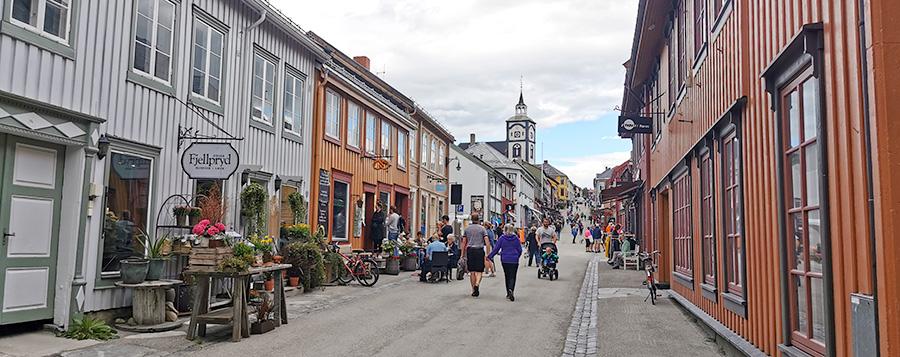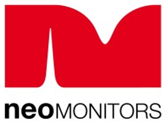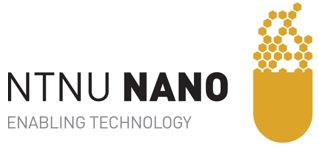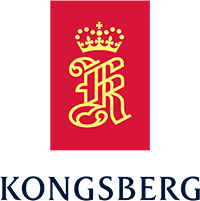Norwegian Electro-Optics Meeting Sept. 7-9, 2022
Norwegian Electro-Optics Meeting Sept. 7-9, 2022
We are happy to announce that the Norwegian Electro-Optics Meeting is being organized Sept. 7-9, 2022 in the scenic village of Røros.
Registration and abstract submission deadline are extended to June 26, 2022.
The Norwegian Electro-Optics Meeting is the main Norwegian forum for scientific and technical optics, uniting basic research, innovation and industry applications. The presentations will include 3-4 invited talks by leading international scientists, and presentation of new projects from Norwegian companies. Young researchers and PhD-students will be given priority for oral presentations, while all participants are invited to present posters.
Tycho Jæger’s Prize in Electro-optics 2022
The Physical Society of Norway and Irma Salo Jæger og Tycho Jægers Stiftelse are proud to announce Tycho Jægers Prize in Electro-optics for 2022.
More information about Tycho Jæger’s Prize in Electro-optics 2022 and nomination form
Conference grants for current master- and PhD-students
We are happy to announce that current master- and PhD-students can apply for a grant to cover the conference (including accommodation, meals and conference fee). The best student abstracts will be awarded a grant.
Please send an email to the committee (astrid.aksnes@ntnu.no, morten.kildemo@ntnu.no, jana.jagerska@uit.no) by deadline June 26 if you wish to apply for the grant. If your attendance is dependent on the grant, please write this in the email to the committee.
Main topics for the conference
- Integrated optics and nanophotonics
- Spectroscopy and (hyper)spectral imaging
- Optical biosensing and imaging
- Optical system design
We invite contributions within a broad range of applications including but not limited to marine, space, telecom, environmental, biological and biomedical.
It is a tradition to have the meeting in historical locations, in the mountains or by scenic fjords on the coast of Norway. This time the meeting will take place at Røros hotel in Trøndelag. Røros is a mountain village on the UNESCO World Heritage site renowned for its copper mines and characteristic 17th and 18th century wooden houses.
The meeting is organised by the Optics Group of the Norwegian Physical Society, the Department of Electronic Systems and the Department of Physics at the Norwegian University of Science and Technology, Kongsberg Defence and Aerospace AS, Norsk Elektrooptikk AS and the Norwegian Defence Research Establishment (FFI). Furthermore, it is made possible thanks to our sponsors (to be announced).

Location
Røros is located between Oslo and Trondheim. Røros can be reached by train from Oslo, Oslo Gardermoen airport and Trondheim (vy.no), or by 2 daily flights from Oslo (wideroe.no). All attendees will get single rooms at Røros hotel.
Abstract Submission
Deadline: June 26, 2022
Abstracts should be single page in pdf-format ready for printing in the conference proceedings. The text has to be typed in 12-point, Times, single spaced only. The title of the talk and authors' names, affiliations, and contact e-mail address must appear on the top of the page typed in 12-point bold and centered. Cite references at the end of the abstract. The abstract must be formatted for printout on A4-size (210x297mm) with 25mm margins on all sides, without page number. Figures (also colour) are welcomed but must fit within the page.
You need a gmail-account to submit the abstract online. If problems, send an e-mail to Morten Kildemo: morten.kildemo@ntnu.no
Organizing committee and contacts
Astrid Aksnes (leader)
Norwegian University of Science and Technology (NTNU)
Email: astrid.aksnes@ntnu.no
Phone: +47 73 59 76 99
Morten Kildemo
Norwegian University of Science and Technology (NTNU)
Email: morten.kildemo@ntnu.no
Phone: +47 73 59 32 11
Jana Jágerská
The Arctic University of Norway (UiT)
Even H Frøen
Kongsberg Defence and Aerospace AS (KDA)
Jon Kristian Hagene
Norsk Elektrooptikk AS (NEO)
Espen Lippert
Norwegian Defence Research Establishment (FFI)
Email to contact the organising committee: Astrid Aksnes: astrid.aksnes@ntnu.no and Morten Kildemo: morten.kildemo@ntnu.no
Invited speakers
3 internationally renowned invited speakers
Prof. Thomas F Krauss, University of York
Prof. Krauss's research focuses on light-matter interaction in photonic nanostructures. His activity includes studying fundamental concepts such as enhanced light emission, to more applied research such as developing nanolasers and biosensors. His group is currently studying antimicrobial resistance and developing point-of-care healthcare devices.
Silicon nanostructures for optical sensing and spectroscopy
Photonic technologies, especially those based on silicon nanostructures, have made tremendous advances in recent years, to the extent that laboratory-level performance can now be achieved with handheld devices. Based on our guided mode resonance approach, which exploits surface resonances (also known as metasurfaces or quasi-BICs) and using immobilised antibodies to obtain the required specificity, we now routinely achieve sensitivities in the pg/ml range, which is sufficient for most clinical applications.
A key ingredient to this success is the use of appropriate surface chemistries, both for orienting and anchoring the antibodies on the sensor surface and for avoiding unwanted fouling, i.e. non-specific binding of other proteins in the matrix, especially serum. As an alternative sensing method, we are also applying silicon nanostructures to detecting the presence of proteins and drugs via their spectroscopic fingerprint in the mid-infrared region. While the sensitivity of the spectroscopic method is lower than that of the antibody-based method, the method is intrinsically faster and can be conducted in a flow-through geometry. I will discuss the pros and cons of either method.
Dr. Zoran Sodnik,
Telecommunication and Integrated Application (TIA) directorate in ESA
Dr Zoran Sodnik is the Optical Communication Technology Manager within the Telecommunication and Integrated Application (TIA) directorate in ESA. He coordinates the implementation of the Secure and Laser communication technology (ScyLight) work plan developing technologies in optical communication, quantum key distribution and photonics in European and Canadian industry and academia. The High throughput Optical Network (HydRON), an ESA project to seamlessly extend the terrestrial fibre network into space, is implemented within ScyLight. Dr Sodnik is performing R&D on a novel satellite telescope design with multiple optical ground stations, optical and quantum communication terminals for LEO constellations and developing adaptive optics systems for free-space laser communications at terabit data rates.
Optical Communication developments in ESA and the road ahead
The presentation will cover technological developments in optical communications at ESA over the last 40 years. It will start by explaining advantages (and disadvantages) of optical communications compared to classical radio communication systems and outline the challenges. This will be followed by achievements in optical communications over the last 25 years that brought Europe to the forefront of the technology. The presentation will then give an overview of the latest international developments/announcements of thousands of low earth orbiting (LEO) satellites announced to become interconnected, many of which with optical communication, and will end with ESA’s HydRON mission proposal to seamlessly extend the terrestrial fibre network into space at terabit data-rates.
Dr. Steve Lecomte, Group Leader at CSEM
Dr. Steve Lecomte is leading the Laser & Quantum Technologies group at CSEM since more than a decade. About twenty physicists and engineers are involved in the mentioned areas and system engineering as well as PIC fabrication rely on additional CSEM colleagues. Technology readiness levels.
From photonics integrated circuits to ultrastable lasers: photonics, quantum and system engineering for limitless opportunities
At the Swiss Center for Electronics and Microtechnology (CSEM), many photonics and quantum activities flourished in the last 15 years based on the unique know-how inherited from the local industry and institutions as well as the tackling of new technologies like photonics integrated circuits (PICs). The talk will present the different realizations and technologies that allowed to develop miniature atomic clocks, frequency combs used in spectrograph calibration for exoplanet search and spaceborn LiDARs and ultrastable lasers for gravitational wave detection.
Registration
Registration deadline: June 26, 2022
Register for the Norwegian Electro-Optics Meeting Sept. 7-9, 2022
Program
The tradition of this meeting is to be open to all activities within optics in Norway.
Conference venue: Røros Hotel
Wednesday, September 7th
|
13:00-14:00 |
Registration and check-in |
|
|
|
14:00-15:00 |
LUNCH |
|
|
|
15:00-15:15 |
Welcome (Meeting chair Astrid Aksnes) |
|
|
|
Session 1: Computational Photonics and Imaging (Chair: Jon Kristian Hagene) |
|||
|
15:15-15:30 |
“Non-parametric reconstruction of the statistical properties of penetrable, isotropic randomly rough surfaces from in-plane, co-polarized light scattering data”, Veronica P. Simonsen, Dick Bedeaux and Ingve Simonsen |
|
|
|
15:30-15:45 |
“Optical metrology of phase objects by computational microscopy”, Kim Robert Tekseth, Jonas Rudshaug, Mahdieh Gholamimayani, Basab Chattopadhyay, Muhammad Nadeem Akram, Tore Børvik and Dag W. Breiby. |
|
|
|
15:45-16:00 |
“Modelling scattering and absorption in infrared microspectroscopy of cells and tissues”, Maren Anna Brandsrud, Johanne Solheim, Eirik Almklov Magnussen, Uladzislau Blazhko, Valeria Tafintseva, Boris Zimmermann, Simona Dzurendova, Volha Shapaval and Achim Kohler |
|
|
|
16:00-16:15 |
“Documenting skin bruises with imaging and spectroscopy”, Pauline Hardeberg Zimmermann |
|
|
|
16:15-16:30 |
“A photonic-chip solution for high-contrast label-free microscopy”, Nikhil Jayakumar and Balpreet S. Ahluwalia |
|
|
|
16:30-16:45 |
“Instant volume microscopy“, Florian Ströhl, Daniel H. Hansen, Jon-Richard Sommernes, Marie Reischke, Mireia Nager, Åsa B. Birgisdottir |
|
|
|
16:45-17:15 |
COFFEE BREAK |
|
|
|
Session 2: Nanophotonic Systems and Surfaces (Chair: Astrid Aksnes) |
|||
|
17:15-17:30 |
“Nanolithography, nanoscopy, nanofluidics: hybrid 2-photon lithography for wafer-scale nanofluidic chip fabrication”, Oliver Vanderpoorten and Balpreet S. Ahluwalia |
|
|
|
17:30-17:45 |
“Combining piezoelectric MEMS and optical metasurfaces”, Paul C. V. Thrane, Chao Meng, Fei Ding, Jo Gjessing, Christopher A. Dirdal, Sergey I. Bozhevolnyi |
|
|
|
17:45-18:00 |
“Enhancing silicon solar cell performance using metal nanoparticles”, John B. Lothe, Mirjam D. Fjell, Mali H. Rosnes, Bodil Holst and Martin M. Greve |
|
|
|
18:00-18:15 |
“Subwavelength resolution polarization-sensitive Fourier ptychography with dome-shaped LED array illumination”, Mahdieh Gholami Mayani, Dag Werner Breiby and Muhammad Nadeem Akram |
|
|
|
18:15-18:30 |
“Mueller matrix ellipsometry for accurate metrology of arrays of Au patches supporting gap surface plasmons”, Per Magnus Walmsness, Nathan Hale and Morten Kildemo |
|
|
|
18:30-18:45 |
“Towards fabrication of reliable surface-enhanced Raman scattering substrastes using nanoimprint lithography”, Karolina Milenko, Anand Summanwar, Paul C. V. Thrane, Firehun T. Dullo, Christopher A. Dirdal, Elizaveta Vereshchagina, Jo Gjessing |
|
|
|
19:30-21:30 |
DINNER |
|
|
Thursday, September 8th
|
Session 3: Integrated Photonics for Sensing (Chair: Jana Jágerská) |
||
|
8:30-9:30 |
Invited Talk: “Silicon Nanostructures for Optical Sensing and Sectroscopy”, Thomas Krauss |
|
|
9:30-9:45 |
“Free-standing photonic chip waveguides for on-chip spectroscopic detection of CO2”, Jehona Salaj, Marek Vlk, Jens Høvik, Astrid Aksnes and Jana Jágerská |
|
|
9:45-10:00 |
“Raman characterisation of UV-written silica waveguides”, Mathias N. Jensen and Olav Gaute Hellsø |
|
|
10:00-10:30 |
COFFEE BREAK |
|
|
Session 4: Photonics for Laser Systems and Sensing (Chair: Espen Lippert) |
||
|
10:30-10:45 |
“Fiber optic hydrogen sensors using tilted fiber Bragg gratings“, Michael Fried, Torstein Nordgård-Hansen, Dag Hjelme, Peter Thomas |
|
|
10:45-11:00 |
“Nanosecond kinetics of upconversion processes in holmium-doped fibers”, André W. Edvardsen and Lars G. Holmen |
|
|
11:00-12:00 |
Invited Talk: “From Photonic Integrated Circuits to Ultrastable Lasers: photonics, quantum and system engineering for limitless opportunities”, Steve LeComte |
|
|
12:00-13:00 |
LUNCH |
|
|
13:00-16:00 |
SOCIAL EVENT: Bus to Olavsgruva and guided tour |
|
|
Panel Discussion and Poster Session (Chair: Jana Jágerská) |
||
|
17:00-17:15 |
“Multidisciplinary Biophotonics, Open Science, and Plug & Pray Deep Learning “, Ida S. Opstad |
|
|
17:15-17:35 |
Panel discussion: Interdisciplinary research, diversity and career in photonics Panel members: Claus Roll (Optica), Ida S. Opstad and Oliver Vanderpoorten |
|
|
17:35-19:30 |
Posters |
|
|
20:00-22:00 |
CONFERENCE DINNER |
|
Friday, September 9th
|
Session 5: Optical Communication and Remote Sensing (Chair: Even H. Frøen) |
||
|
8:30-9:30 |
Invited Talk: “Optical Communication Developments in ESA and the Road Ahead”, Zoran Sodnik |
|
|
9:30-9:45 |
“HYPERNOR: Development of a hyperspectral imager for microsatellites”, Andrei Fridman, Lars Lierstuen, Magnus Breivik, Erlend Leirset and Trond Løke |
|
|
9:45-10:00 |
“High altitude hyperspectral imager for Earth monitoring”, Karina Strøm, Stephane Nicolas, Magnus Breivik and Trond Løke. |
|
|
10:00-10:15 |
“Improved line-focus solar concentration through étendue rotation”, Håkon J. D. Johnsen |
|
|
10:15-10:30 |
“Long-range low-noise Rayleigh-based distributed acoustic sensor (DAS) interrogation and its applications”, Erlend Rønnekleiv, Trygve Sørgård, Ole Henrik Waagaard and Jan Kristoffer Brenne |
|
|
10:30-11:00 |
COFFEE BREAK |
|
|
Session 6: Industry and Metrology (Chair: Morten Kildemo) |
||
|
11:00-11:15 |
“Key quality parameters in hyperspectral systems”, Trond Løke |
|
|
11:15-11:30 |
“How good is your hyperspectral camera? Status report from the development of the IEEE P4001 standard for hyperspectral imaging”, Torbjørn Skauli |
|
|
11:30-11:45 |
“Developing photodiodes with record-low internal quantum deficiency and self-calibrating methods in the chipS-CALe project”, Jarle Gran, Ozhan Koybasi, Marco Povoli, Ørnulf Nordseth, Trinh Tran, Eivind Bardalen, Marit Ulset and Lutz Werner |
|
|
11:45-12:00 |
“Thermal Infrared Imaging with Microbolometer Arrays”, Torbjørn Østmoe |
|
|
12:00-12:15 |
“Robotic sensors for in-field quality control of strawberries”, Anders H. Hansen, Jens Petter Wold, Jon Tschudi, Trine Kirkhus, Zahra Ghadyani and Marion O'Farrell |
|
|
12:15-12:45 |
Closing - Next Meeting Organizer - Norsk Fysisk Selskap |
|
|
12:45-14:00 |
LUNCH |
|
Posters
|
Materials Science in Photo/Acoustic Transducers |
Komal Agarwal, Frank Melandsø and Anowarul Habib |
|
75 Hz quantitative phase microscopy |
Azeem Ahmad, Vishesh Dubey, Mona Nysta, Ganesh Acharya, Purusotam Basnet and Balpreet Singh Ahluwalia |
|
Motion trace analysis based on label-free imaging and MUSICAL |
Sunil Bhatt, Ankit Butola, Dalip Singh Mehta and Krishna Agarwal |
|
Nanomanufacturing of a-Si pillar based optical metasurfaces |
Victoria Bjelland, Niklas Schwarz, Vilde Vraalstad, Per Magnus Walmsness, Nathan Hale, Jens Høvik, Daniel Vala and Morten Kildemo |
|
The 4x4 transfer matrix method: a flexible and computationally efficient tool for exploring a system's surface magnon polaritons |
N. Hale, I. Simonsen, C. Brüne and M. Kildemo |
|
Simulation of trapping by quasi-bound state in the continuum |
Md Rabiul Hasan, Marek Vlk and Olav Gaute Hellesø |
|
A photonic chip-based microscopy system |
Ine L. Jernelv, Merete Storflor and Øystein I. Helle |
|
High power fiber laser for coherent beam combination |
Arne Magnus Tveita Løken, Helge Fonnum, Lars G. Holmen and Espen Lippert |
|
Chip-scale native germanium platform for low-loss LWIR photonics |
Dingding Ren, Jens Høvik, David Burghoff, Astrid Aksnes and Bjørn-Ove Fimland |
|
Geophysical activity sensor using the state of polarization in optical fibres |
Kristina Shizuka Yamase Skarvang, Steinar Bjørnstad, Dag Roar Hjelme |
|
3D vectorial diffraction simulations of oblique plane microscopy systems with solid immersion tertiary objectives |
Jon-Richard Sommernes and Florian Ströhl |
|
Mitigating reflections in integrated gas sensors |
Antonia Torres-Cubillo, J. Gonzalo Wangüemert-Pérez, Alejandro Sánchez-Postigo, Íñigo Molina-Fernández, Robert Halir |
|
The dual-mode optical power detector - self-calibration and SI traceability |
Marit Ulset, Trinh Tran and Jarle Gran |
|
Dielectric metasurface for optical trapping of nanoparticles |
Marek Vlk, Md Rabiul Hasan, Olav Gaute Hellesø |
|
Towards in-situ state of health monitoring of lithium-ion batteries using internal fiber-optic sensors |
Markus Solberg Wahl, Jacob Joseph Lamb, Peter James Thomas, Steve Boles and Odne Stokke Burheim |
|
Methane absorption sensing at 3 µm using silicon-on-insulator (SOI) slot waveguide |
Henock Demessie Yallew, Marek Vlk, Anurup Datta, Sebastián Alberti, Jens Høvik, Astrid Aksnes, Martin Møller Greve and Jana Jágerská |
|
DustDetect - Diffuse dust emissions monitoring |
Yifeng Chen, Lars Moen Strømsnes, Steinar Olsen, Heiko Gaertner, Peter Geiser, Eli Hunnes and Bernd Wittgens |
Abstract Submission
Registration
Registration deadline: June 26, 2022
Register for the Norwegian Electro-Optics Meeting Sept. 7-9, 2022






